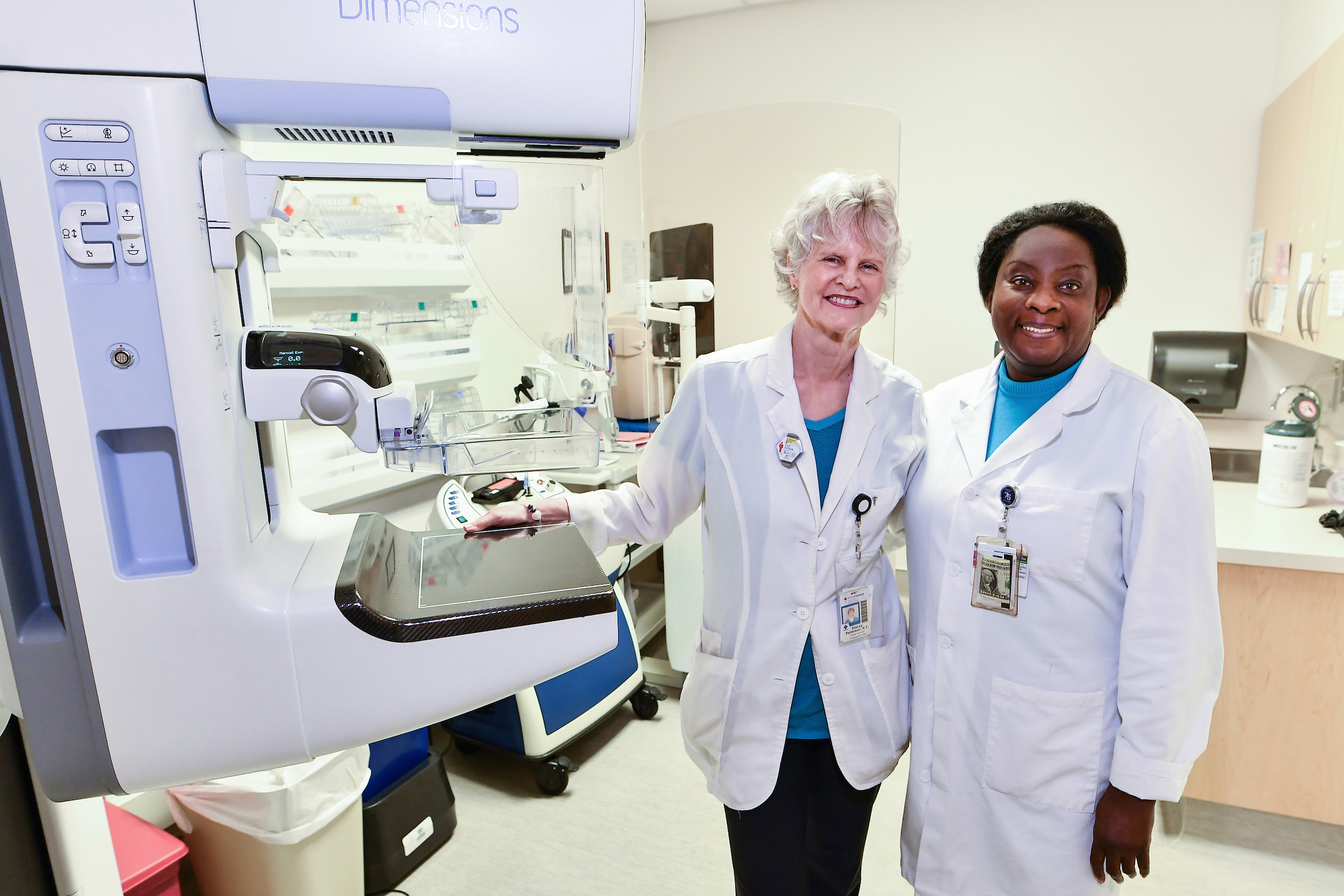
The best way to treat breast cancer is to catch it early. The third Friday in October each year is National Mammography Day, as a reminder to commit to taking care of your own, your partner’s, sisters, mother’s, or daughters breast health by getting an annual check-up, mammogram (if age appropriate), and breast examination.
Mammograms are considered the standard of care to screen for breast cancer because it can detect cancer in its earliest stages, before it can be felt during a self-breast exam.
Here’s what you need to know about mammograms and getting screened.
What is a Mammogram?
First, it is important to understand the basics of a mammogram. It’s a tool that uses compression and X-ray technology to image your breast.
There are two types of mammograms:
- Screening mammograms are typically done every year to check the breasts for any early signs of breast cancer.
- Diagnostic mammograms focus on getting more information about a specific area (or areas) of concern — usually due to a suspicious screening mammogram or if the patient feels a palpable lump/mass.
Types of Mammograms
Mammograms offer substantial benefit for women in their 40’s and older to detect cancer earlier. They can also capture tiny changes to the breast, such as calcification’s, that cannot be seen on alternative imaging. Depending on your risk for breast cancer, your doctor may recommend one of the following mammograms:
- Digital Mammograms: This type of mammogram uses special types of computers to capture images, instead of X-ray film. Digital mammography provides a clearer and more accurate image of the breast than analog or film mammography.
- Tomosynthesis “3D” Mammograms: While a past 2D mammogram usually takes two X-ray views of the breast from different angles, new 3D mammogram technology provides a complete picture of the breast to investigate. At the Margie Petersen Breast Center, all of our mammograms use digital tomosynthesis to help detect cancer faster and more accurately.
Click here to learn more about mammograms
How to Prepare for a Mammogram
If you’ve consulted with your provider about getting a mammogram, there are a few things to keep in mind before the screening.
- Inform your doctor or the technologist performing the screening if you are or could be pregnant.
- You can continue to take prescription medication as normal.
- It is important not to wear body powders, creams or lotions under your arms or near your chest as these beauty products can interfere with the mammogram screening.
- Plan to remove clothing and jewelry during the mammogram.
Once you are ready to schedule your mammogram, consider The Margie Peterson Breast Center. We offer treatment for benign breast conditions as well as a comprehensive approach to the detection and management of breast cancer in its earliest forms.
To schedule a mammogram contact us at 310-829-8000, option 1 or fill out our online form for us to contact you. It’s simple, easy, and most importantly, it can save your life and the lives of loved ones.

